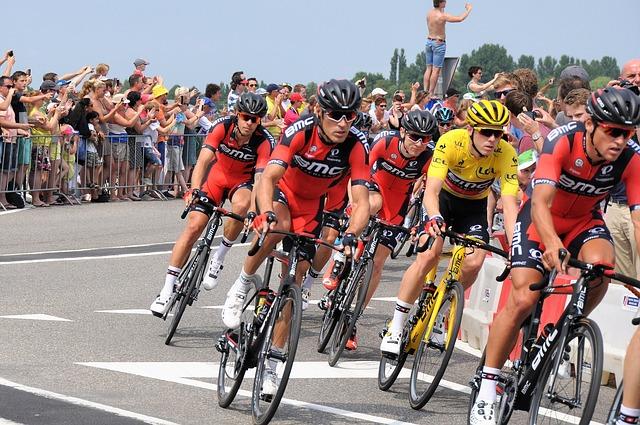Why Is The First Tour de France Rest Day Not Until The 10th Day?
As cycling enthusiasts count down to the start of the iconic Tour de France, one of the most frequently asked questions arises: why does the race schedule mandate a rest day only after the challenging first ten stages? This year’s grueling itinerary continues a long-standing tradition that leaves competitors, fans, and analysts alike curious about the rationale behind such a late break. From punishing mountain climbs to intense flat stages, the first ten days of racing epitomize the spirit of endurance that defines the Tour. In this article, we dissect the historical context, logistical challenges, and strategic implications that contribute to the decision, shedding light on how it impacts team dynamics and individual performance as cyclists navigate this legendary event.
Impact of Tour De France’s Unique Structure on Rider Performance
The unique structure of the Tour de France plays a significant role in shaping rider performance over the course of the event. By delaying the first rest day until the 10th stage, the Tour tests the limits of endurance and strategy. This extended period of continuous racing emphasizes the importance of meticulous planning and adaptability. Riders must manage their energy and recover effectively during the race, leading to critical decisions on pacing and race tactics that can make or break their chances for success. The physical and mental strain of racing for ten consecutive days prepares athletes for the grueling test of stamina, ensuring only the strongest and most resilient emerge victorious.
Furthermore, the lack of an early rest day creates a cascading effect on team dynamics and individual rivalries. Teams must work cohesively to support their leaders while also ensuring that domestiques conserve enough energy for potential challenges ahead. Tactics become pivotal, as riders strategically target segments where they can gain time on rivals. This unique structure encourages an aggressive racing style, showcasing not just individual prowess but also collaborative efforts among teammates. Key factors influenced by this format include:
- Pacing strategies ‚Äď determining when to push hard or hold back.
- Recovery methods ‚Äď vital for regaining strength between stages.
- Team cohesion ‚Äď reliance on teammates can affect overall performance.
| Stage | Rider Focus | Challenges |
|---|---|---|
| 1-10 | Endurance Building | Fatigue Management |
| 11+ | Strategic Racing | Injury Risks |
Historical Context of Rest Days in Cycling’s Prestigious Race
The evolution of rest days during the Tour de France is deeply rooted in the history of cycling itself. Originally, the race implemented a grueling schedule that demanded riders push their limits over extensive daily distances. In the early 1900s, cyclists faced not just the challenges of rugged terrain and variable weather, but also the strains of primitive racing conditions. Early Tour routes often took weeks, and riders frequently relied on limited infrastructure and support. This context led to the realization that rest days were essential for maintaining the health and performance of competitors, allowing for recovery and strategy recalibration.
The decision to place the first rest day on the 10th day of competition is strategic, reflecting both the physical demands of the race and the modern understanding of endurance sports. Historically, many European cycling races incorporated structured rest periods to foster competitive integrity. In the case of the Tour de France, this timing is significant for several reasons:
- Physical Recovery: A rest day after intense racing allows cyclists to recuperate from fatigue and injuries.
- Strategic Planning: Teams can assess their performance and realign tactics for the upcoming stages.
- Viewer Engagement: A designated rest day boosts excitement and anticipation for the following stages.
Analysis of Race Stages Leading Up to the First Rest Day
The race towards the first rest day of the Tour de France is a grueling journey for riders, packed with intense stages that test their limits. The initial days are strategically designed to create a balance between high-speed sprints and challenging mountain climbs, allowing teams to establish their standings early in the competition. Key aspects of these stages include:
- Variety of Terrain: Riders face everything from flat stretches ideal for sprinters to undulating hills that favor climbers.
- Tactical Moves: Teams deploy strategies to gain time and advantages, shaping the overall standings.
- Weather Conditions: Riders must adapt to changing weather, which can significantly influence race dynamics.
As racers navigate through these demanding stages, their physical and mental resilience is tested continuously. The cumulative impact of each day amplifies the fatigue, setting the stage for significant aftermath post-rest day. A closer look at the distance covered can illuminate why this period is particularly challenging:
| Stage | Distance (km) | Elevation Gain (m) |
|---|---|---|
| Stage 1 | 185 | 500 |
| Stage 5 | 180 | 1500 |
| Stage 9 | 200 | 2000 |
The blend of exhaustion and adrenaline culminates in a keener desire for that first rest day, underscoring the physical demands of the Tour. Drivers rely heavily on team dynamics, advanced nutrition, and recovery tactics throughout this journey, ensuring they are primed for the battles to come in the second half of the race.
Strategies for Cyclists to Optimize Recovery Before the Break
For cyclists, optimizing recovery is crucial, especially in the grueling stages leading up to a well-deserved rest day. To maximize regeneration, riders should focus on the following strategies:
- Hydration: Maintaining hydration before and after each stage helps prevent fatigue and promotes quicker recovery. Aim for electrolyte-rich fluids.
- Nutrition: Consume a balanced diet rich in carbohydrates and protein to replenish energy stores and support muscle repair. Post-ride meals should include lean proteins and healthy fats.
- Active Recovery: Engage in low-intensity activities, like light cycling or stretching, to promote blood flow without straining the body.
- Sleep Hygiene: Prioritize quality sleep, aiming for 7-9 hours, and establish a consistent bedtime routine to enhance recovery.
Incorporating these techniques into daily routines can significantly improve performance and prepare cyclists for the challenges ahead. Additionally, the management of muscle soreness and fatigue can be aided by:
| Technique | Benefits |
|---|---|
| Massage Therapy | Reduces muscle tension and enhances circulation. |
| Foam Rolling | Helps alleviate tightness and aids in muscle recovery. |
| Cold Therapy | Offers relief from inflammation and speeds up recovery. |
Key Takeaways
In conclusion, the scheduling of the first rest day in the Tour de France on the 10th day of competition is a significant aspect of race strategy and historical tradition. This decision not only highlights the sheer endurance required for cyclists but also emphasizes the unique challenges posed by the race’s grueling format. As competitors navigate the demanding early stages, the extended gap until the first respite reflects both the physical and mental fortitude needed to succeed in one of the world‚Äôs most revered sporting events. As we look forward to the unfolding drama of this year‚Äôs Tour, understanding this structure deepens our appreciation of the riders’ remarkable resilience and the legendary status of the event itself.




